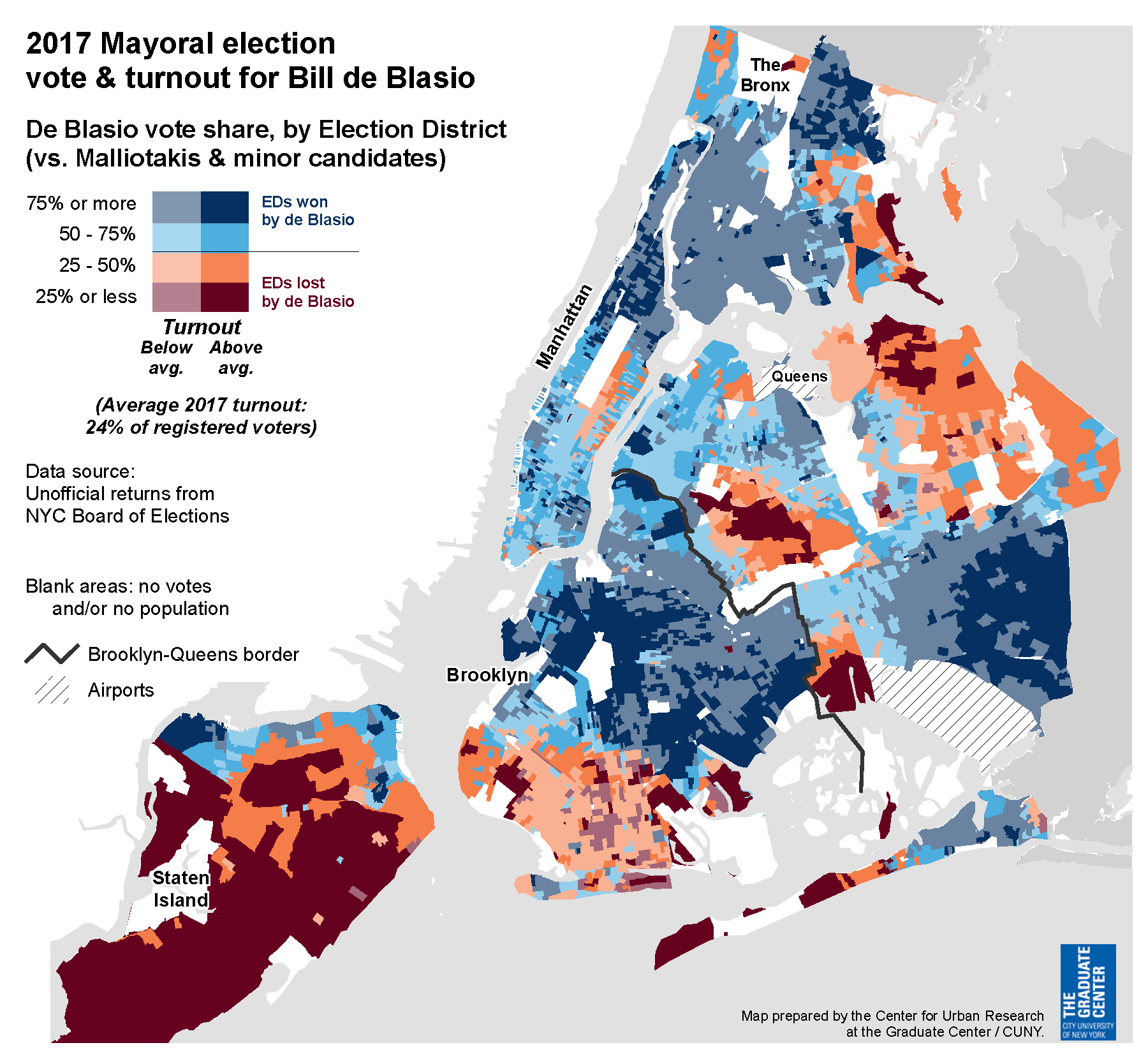Bill de Blasio
8.5% of New Yorkers voted for de Blasio. Is that a mandate?

Edwin J. Torres/Mayoral Photography Office
New York City Mayor Bill de Blasio easily won a second term on Tuesday night with 66 percent of the vote, the first time a Democrat has been re-elected to the position since Ed Koch in 1985. But although de Blasio may see his victory as a mandate for his agenda, calling it “the beginning of a new era of progressive Democratic leadership in New York City for years and years to come” at his election night party, the actual voter turnout numbers could defy that optimism.
As of July 2016, there are 8,537,673 people in New York City. According to the state Board of Elections, there were 5,053,842 voters in the city as of Nov. 1, and 4,596,813 of them are considered active by the state. Out of that nearly 4.6 million active voters, early reports from the New York City Board of Elections show that 1,097,846 voted in the mayoral election. Narrowing the scope even further, only 726,361 people in New York City voted for de Blasio.
The number of people who voted for de Blasio is not insignificant – it is greater than the populations of Seattle, Boston or Washington, D.C. – but in New York City, it is 8.5 percent of the population at large.
RELATED: New York City's 2017 general election results
There was still good news for de Blasio, as the number of people who voted in the 2017 was higher than in the 2013 election, although the percentage decreased because there are now more registered voters. In 2013, 1,087,710 people voted in the mayoral election – and 795,679 voted for de Blasio. According to Steve Romalewski, director of the Mapping Service at the CUNY Graduate Center, the raw number of voters is more trustworthy than the percentage at this point, as the number of active voters as calculated by the Board of Elections may not be fully up to date.

A look at the 2017 voter turnout in New York City, provided by Steve Romalewski, director of the Mapping Service at the CUNY Graduate Center. Click here for larger version.
Romalewski noted that there has been a downward trend in mayoral elections for decades, and it is too soon to tell if it is being reversed. The last time voter turnout for a mayoral election was over 50 percent was in 1993, when 57 percent of voters participated in the race where Rudy Giuliani defeated incumbent Mayor David Dinkins.
According to city Board of Elections data, a higher percentage of people voted in the election for Michael Bloomberg’s third term as mayor than in de Blasio’s first or second, with 28.2 percent turnout in 2009. The 2013 mayoral election had turnout of 26 percent. This year’s turnout was 23.9 percent.
Even though the increase in total voter participation in 2017 is encouraging, Romalewski believes de Blasio shouldn’t be too quick to believe it is an endorsement of his policies.
“I think it’s great that more people turned out to vote, but I still think it’s worrisome for democracy that the number is so low,” he said. “It’s a stretch to say that this is a ‘mandate.’”
RELATED: How New Yorkers voted on a constitutional convention
There was a mandate in another big race in New York City in 2017 – the campaign over Ballot Proposal 1, on whether the state should hold a constitutional convention. The proposal was defeated by 78.6 percent of the vote, with 995,204 voting on the issue. Of that number, 782,252 voters opposed a constitutional convention – more than voted for de Blasio.

NEXT STORY: Fewer women in the City Council, even if Crowley comes back